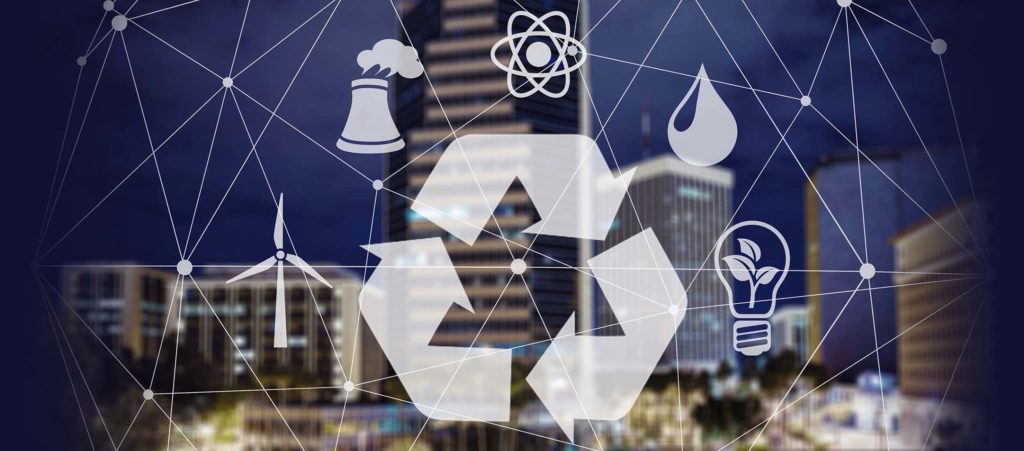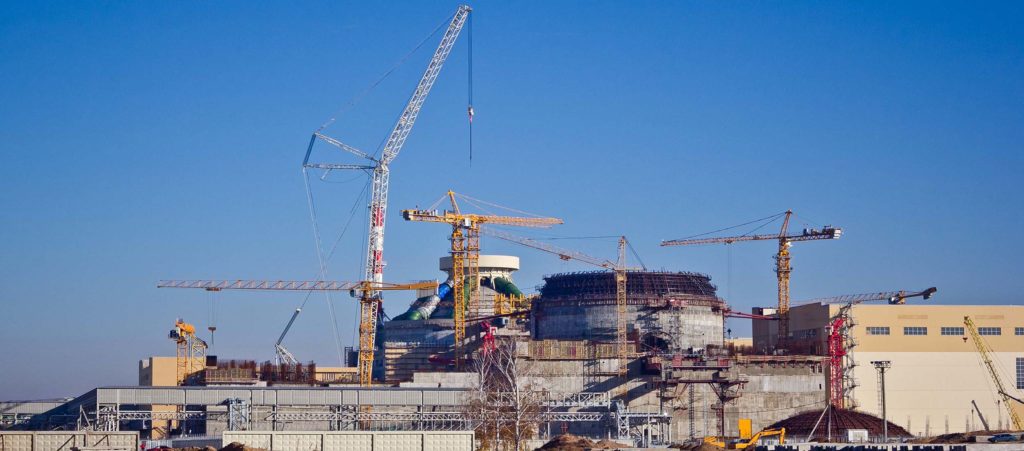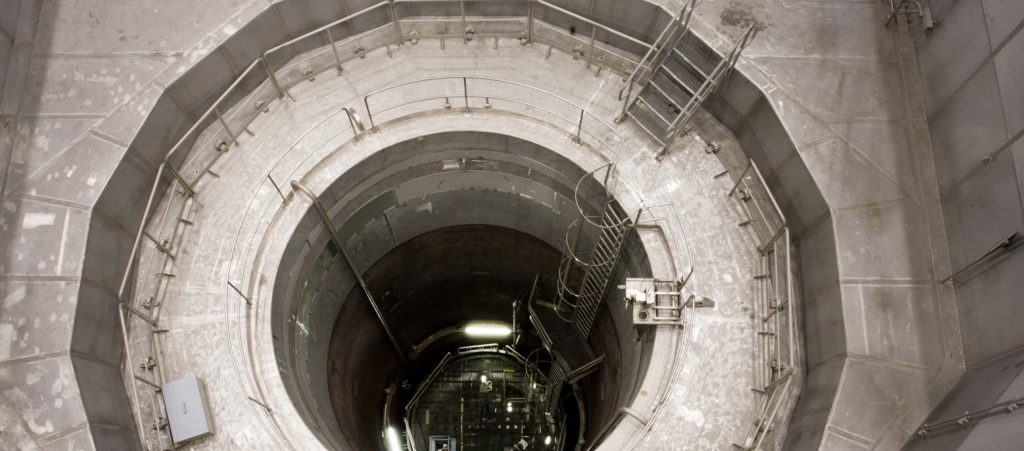Years in the making, advanced nuclear reactors can play a pivotal role in meeting climate goals
In October of 2020, the U.S. Department of Energy (DOE) announced $160 million in funding to support the construction of two advanced nuclear reactors. The funding announcement came just five months after DOE launched the Advanced Reactor Demonstration Program, which aims to provide $3.2 billion in funding over seven years to build cutting-edge reactors that have been in development for years.
The two reactor projects receiving DOE funding—funding that will be matched by private industry—are good examples of technologies that have the potential to make carbon-free nuclear power far more cost-effective than it has been in the past.
For example, the Natrium reactor being constructed by TerraPower on the site of a retiring coal plant in Wyoming is a high-temperature, sodium-cooled reactor that includes storage, which will allow it to operate flexibly to better support intermittent renewables like wind and solar. Another high-temperature reactor will be built in Washington State by X-energy. The X-energy plant will also be able to operate flexibly and will include a facility to produce TRistructural ISOtropic particle fuel (TRISO), which is designed to withstand extremely high temperatures.
Advanced Technology and Decarbonization Align
This flurry of activity is particularly important because the DOE funding requires that the reactors be completed and operational within seven years—an aggressive timeline, particularly considering that the typical development and construction timeline is about 10 years.
To Craig Stover, who manages EPRI’s Advanced Nuclear Technology (ANT) program, the DOE’s demonstration projects are an indication of just how much utility and societal attitudes towards nuclear power have changed over the past half-decade or so. “There was a time when the phone didn’t ring a lot, and nobody thought of building a nuclear power plant,” said Stover. “In the last two years, the phone has been ringing every day with people asking what they need to know to start building an advanced nuclear plant.”
Two primary factors can explain this burst of interest in advanced nuclear technology. One is the increasing priority of utility decarbonization. At the end of 2020, for example, 70% of the largest U.S. utilities had set targets for net-zero emissions or deep decarbonization. “We hear from utilities that say they have committed to an ambitious carbon goal and run their models and realize they can’t meet their targets without a nuclear plant,” said Stover.
At the same time, though, there is a recognition that traditional light water reactors are too expensive to build. This is why the past decade and a half of research into advanced nuclear reactor technology is so consequential today. “When people developed advanced reactor technologies over the last decade, nobody knew that when we got to the early 2020s, utilities would commit to these net-zero and decarbonization goals,” said Stover. “Now the technology is ready, and carbon goals are here, so these two things that have been happening in parallel have now connected.”
Why Faster is Cheaper
The question for EPRI’s Advanced Nuclear Technology program is how to conduct research that overcomes the challenges standing in the way of more accelerated deployment of advanced reactors. Ultimately, what that means is figuring out ways for nuclear plants to be built faster and cheaper – which, given that nuclear plant construction costs can be as high as $1 million per day, are intertwined obstacles.
At EPRI, the challenge of accelerating and lowering the cost of plant construction translates into multiple research initiatives. These projects all acknowledge that the timeline for getting an advanced nuclear reactor built and producing carbon-free electricity is about nine years. Therefore, if a utility wants to have a reactor up and running by 2035, it will need to complete site selection by 2026, have permit applications finished by 2029, and break ground in 2031 to accommodate the four-year construction time.
Given that timeline, one strain of EPRI’s ANT work is to inform utility resource planning. “A lot of folks in the corporate offices of utilities are talking about what they need to know to build a plant in the next 10 to 15 years,” said Stover. “We are developing training for them, and we have a siting guide and owner-operator requirements they can use early in the project to inform resource planning. This is an important area of research today because you have many utilities thinking about building a nuclear plant, and they have only two people working on it, and they need help.”
Not surprisingly, Stover says the majority of questions he receives are about EPRI’s multiple research projects devoted to slashing deployment costs. Many people, however, don’t understand that the majority of expense for building a nuclear plant is not related to the area of the plant where atoms are split to generate electricity. “Everyone wants to talk about the nuclear plant, but what drives the cost is the fundamental construction activities like concrete and rebar,” said Stover.
This is why EPRI projects have focused on improving the concrete and rebar that go into resilient power plants. For example, EPRI is researching ways to improve concrete mixtures and optimize the design of concrete reinforced structures. Because advanced reactor technologies operate at higher temperatures than traditional light water reactors, EPRI is also investigating whether extended exposure to elevated temperatures reduces concrete’s durability.
Other EPRI research initiatives explore how advances in construction materials can accelerate their deployment. For instance, steel is a foundational material for most buildings. EPRI is examining how steel-plate composite walls that are made in factories can be used with advanced reactors. EPRI is also conducting research into self-consolidating concrete, which can flow into place without the help of labor. “When you talk about robust concrete structures and realize on-site construction costs are $1 million per day if you can pour concrete faster, it pays for itself fast. That is construction optimization,” said Stover.
Faster and Cheaper Manufacturing of Components
EPRI has also spent years developing advanced approaches that speed the manufacturing of plant components and lower their costs. For example, today, it can take three or four years to manufacture a plant’s reactor pressure vessel, and only a handful of companies worldwide can even do it. Since 2016, EPRI has been working with DOE, the United Kingdom’s Nuclear Advanced Manufacturing Research Center (AMRC), and advanced reactor manufacturer NuScale Power to develop and test technologies to build reactor pressure vessels more quickly and cost-effectively.
In particular, the collaborators have worked on powder metallurgy-hot isostatic pressing (PM-HIP), which involves atomizing metal alloys into a powder, placing the powder into a metal mold, and using high temperatures and pressures to consolidate the powder into solid components. The researchers also have advanced electron beam welding, which fuses two metal sections together by focusing a high-intensity energy beam on the junction. Unlike traditional welding, electron beam welding doesn’t require filler material and can be completed in just one pass. The research has already demonstrated the potential to reduce welding time by 90 percent and costs by 40%compared to traditional approaches.
Improving manufacturing reduces plant costs as well as risks. “Components take so long to manufacture, and there are only a few places that make them. That is a big risk for a project,” said Stover. “With new technologies, you can make a reactor vessel in less than a year and bring in more equipment suppliers. That creates a more robust supply chain and reduces the risk because nobody wants a component that takes years to make.”
Driving Collaboration and Demonstrating New Reactors
EPRI is also deeply involved with speeding the development of advanced nuclear reactor technology. In part, EPRI’s role is to help coordinate the work being done at national laboratories, universities, and individual reactor companies to avoid the duplication of efforts.
This is important because it is time-consuming and expensive to obtain materials certification to be used in advanced reactors. “We have an advanced reactor materials development initiative, which works to qualify these high-temperature materials. This is a critical gap for high-temperature plants because there are not many qualified alloys for high temperatures in nuclear applications today,” said Stover. “For any one material, it can cost $15 million to qualify for a nuclear application, so you want to do it collaboratively.”
Other ongoing research initiatives EPRI is spearheading include developing a technical basis to decouple the section of the plant where nuclear energy creates steam (known as the nuclear island) from the balance of the plant that creates electricity. This would allow faster construction, dramatically decreasing the cost of building an advanced nuclear power plant.
“Because of how robust these new designs are, you don’t need to rely on anything outside the nuclear island to shut the plant down,” said Stover. “If something happens in the turbine island, that doesn’t have an impact on the nuclear part of the plant. Our work is to show that it doesn’t have an impact on the safety of the nuclear plant. If we can do that, then a huge portion of a new plant becomes a commercial project and can be built fast.”
Another EPRI project just getting underway is investigating the automation potential of a wide range of tasks at nuclear power plants. This could optimize the staffing for these new reactors and improve efficiency.
EPRI is also involved with several DOE-funded demonstration projects, including one with Kairos Power, the Oak Ridge National Laboratory, and Materion Corporation. The project will demonstrate a 140-megawatt reactor fueled by TRISO that is expected to be operational by 2026. Another project brings together EPRI, Southern Company, and TerraPower to demonstrate a pilot molten chloride fast reactor, which uses liquid salts as both coolant and fuel.
Taken together, the demonstration projects and research can accelerate the deployment of advanced nuclear reactor technologies.
EPRI Technical Expert:
Craig Stover
For more information, contact techexpert@eprijournal.com.
Banner artwork by Edge Design




